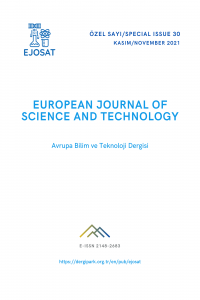Kolluk Kuvvetleri Tarafından Yapılan Araç Denetimlerindeki Verimliliğinin Artırılmasını Amaçlayan Plaka Tanıma Sistemi
Abstract
Yapılan bu çalışmada amaç kolluk kuvvetleri tarafından yapılan araç denetimlerinin verimliliğinin artırılmasıdır. Özellikle trafik akışının yoğun olduğu bölgelerde tüm araçlarda inceleme yapılamadığından dolayı denetimlerin verimliliği düşmektedir. Nizami bir aracın seyahat halinde iken birden çok kontrol noktasında tekraren durdurulmasının önüne geçilmesini, hakkında ihbarda bulunulmuş plakaya sahip aracın tespit edilen ilk noktada muhakkak durdurulmasını hedefleyerek denetimlerin verimliliğini artırmak hedeflenmiştir. Tasarlanan bu sistemde görüntü işleme ve KNN gibi teknikler ile okunan plaka tarih bilgisi ile veri tabanına kaydedilmekte, plakanın önceki son görüntülendiği tarihe göre hesaplama yapılmakta ve denetim noktasından sık sık geçen araçların ekstra denetiminin yapılmasının önüne geçilmektedir. Bu sayede denetim yapan ekibin işi kolaylaştırılmakta, aynı bölge içerisindeki nizami araçların sık sık denetime girmesinin önüne geçilmekte ve bazı sürücüler için de zaman kaybı oluşması önlenmektedir. Yapılan denemelerde gerçek zamanlı çalışan KNN ile plaka tanıma sisteminde yaklaşık olarak %67 doğruluk oranı tespit edilmiştir. Sistemin daha başarılı çalışabilmesi plaka tanıma işi için derin öğrenme metotlarının kullanılması önerilmektedir.
References
- Çatal M. (2019). Mobil Emniyet Uygulamalarına Yönelik Bir İnceleme: METE Örneği, “Dijital Çağda Güvenliğin Dönüşümü ve Bir İç Güvenlik Aktörü Olarak Polis” Sempozyumu. pp 79-93, İstanbul, Türkiye, 2019.
- Emniyet Genel Müdürlüğü websitesi. (2021). 29 Ağustos 2021 tarihinde http://www.egm.gov.tr/temmuz adresinden erişildi.
- Zhuang J., Hou S., Wang Z. ve Zha Z. J. (2018) Towards Human-Level License Plate Recognition. Ferrari V., Hebert M., Sminchisescu C., Weiss Y. (eds) Computer Vision – ECCV 2018. ECCV 2018. Lecture Notes in Computer Science, vol 11207. Springer, Cham. https://doi.org/10.1007/978-3-030-01219-9_19.
- Ngöl, O. B. İ., ve Cu, Ö. K. U. Ş. (2008). Bilgisayar Tabanlı Araç Plaka Tanıma Sistemi. Bilişim Teknolojileri Dergisi, 1(3), 0. https://doi.org/10.17671/btd.04928
- Rasheed S., Naeem A. ve Ishaq O. (2012). Automated number plate recognition using hough lines and template matching. Proceedings of World Congress Engineering Computer Science, pp. 199–203
- Li, B., Tian, B., Li, Y. and Wen, D. (2013). Component-based license plate detection using conditional random field model. IEEE Transactions on Intelligent Transportation Systems, 14(4):1690-1699
- Bayram, F. (2019). Derin Öğrenme Tabanlı Otomatik Plaka Tanıma. Journal of Polytechnic, 0900(4), 955–960. https://doi.org/10.2339/politeknik.515830
- Quiros, A. R. F., Bedruz, R. A., Uy, A. C., Abad, A., Bandala, A., Dadios, E. P., Fernando, A., ve Salle, D. La. (2017). A kNN-based approach for the machine vision of character recognition of license plate numbers. IEEE Region 10 Annual International Conference, Proceedings/TENCON, 2017-December, 1081–1086. https://doi.org/10.1109/TENCON.2017.8228018
- CozumPedia websitesi. (2021). 29 Ağustos 2021 tarihinde https://cozumpedia.com/pyqt-nedir adresinden erişildi.
License Plate Recognition System Aiming to Increase Efficiency in Vehicle Inspections by Law Enforcement Forces
Abstract
The aim of this study is to increase the efficiency of vehicle inspections by law enforcement officers. Especially in areas with heavy traffic flow, the efficiency of inspections decreases as all vehicles cannot be inspected. It is aimed to increase the efficiency of inspections by aiming to prevent a legal vehicle from being stopped again at more than one check point while traveling, and to stop the vehicle with the reported plate at the first detected point. In this designed system, the license plate read with techniques such as image processing and KNN is recorded in the database with date information, calculations are made according to the date the license plate was last viewed, and extra inspections of vehicles that frequently pass through the inspection point are prevented. In this way, the work of the inspection team is simplified, frequent inspections of legal vehicles in the same region are prevented, and time loss for some drivers is prevented. In the trials, approximately 67% accuracy rate was determined in the license plate recognition system with real-time working KNN. It is recommended to use deep learning methods for license plate recognition for the system to work more successfully.
Keywords
References
- Çatal M. (2019). Mobil Emniyet Uygulamalarına Yönelik Bir İnceleme: METE Örneği, “Dijital Çağda Güvenliğin Dönüşümü ve Bir İç Güvenlik Aktörü Olarak Polis” Sempozyumu. pp 79-93, İstanbul, Türkiye, 2019.
- Emniyet Genel Müdürlüğü websitesi. (2021). 29 Ağustos 2021 tarihinde http://www.egm.gov.tr/temmuz adresinden erişildi.
- Zhuang J., Hou S., Wang Z. ve Zha Z. J. (2018) Towards Human-Level License Plate Recognition. Ferrari V., Hebert M., Sminchisescu C., Weiss Y. (eds) Computer Vision – ECCV 2018. ECCV 2018. Lecture Notes in Computer Science, vol 11207. Springer, Cham. https://doi.org/10.1007/978-3-030-01219-9_19.
- Ngöl, O. B. İ., ve Cu, Ö. K. U. Ş. (2008). Bilgisayar Tabanlı Araç Plaka Tanıma Sistemi. Bilişim Teknolojileri Dergisi, 1(3), 0. https://doi.org/10.17671/btd.04928
- Rasheed S., Naeem A. ve Ishaq O. (2012). Automated number plate recognition using hough lines and template matching. Proceedings of World Congress Engineering Computer Science, pp. 199–203
- Li, B., Tian, B., Li, Y. and Wen, D. (2013). Component-based license plate detection using conditional random field model. IEEE Transactions on Intelligent Transportation Systems, 14(4):1690-1699
- Bayram, F. (2019). Derin Öğrenme Tabanlı Otomatik Plaka Tanıma. Journal of Polytechnic, 0900(4), 955–960. https://doi.org/10.2339/politeknik.515830
- Quiros, A. R. F., Bedruz, R. A., Uy, A. C., Abad, A., Bandala, A., Dadios, E. P., Fernando, A., ve Salle, D. La. (2017). A kNN-based approach for the machine vision of character recognition of license plate numbers. IEEE Region 10 Annual International Conference, Proceedings/TENCON, 2017-December, 1081–1086. https://doi.org/10.1109/TENCON.2017.8228018
- CozumPedia websitesi. (2021). 29 Ağustos 2021 tarihinde https://cozumpedia.com/pyqt-nedir adresinden erişildi.
Details
| Primary Language | Turkish |
|---|---|
| Subjects | Engineering |
| Journal Section | Articles |
| Authors | |
| Publication Date | December 15, 2021 |
| Published in Issue | Year 2021 Issue: 30 |

